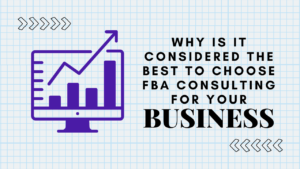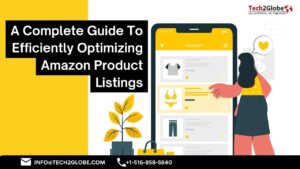To increase competitiveness, profit margins, and take advantage of changes in supply and demand, you must frequently change the price of your products on Amazon. There are numerous repricing strategies, though.
Actually, there are numerous strategies from which to choose. So how can you create an Amazon repricing strategy that works for your business? In this blog, we’ll look at the important factors to consider while creating an Amazon repricing strategy.

What’s Next?
- Several things need to be taken into account when developing a repricing strategy.
- These include being aware of all of your costs and who your real competitors are.
- To decide whether to win the Buy Box or reprice based on inventory, use these parameters as a guide.
- To speed up and improve the process, use an automatic repricing tool.
Decide The Priorities For Your Products
Your initial action should be to prioritize which products. Give emphasis to the things that are harder to sell or more expensive but have more room for price reductions in order to become more affordable because you might not want to create a strategy for every one of your items.
Examine your products and services, and focus on the ones that are going to have the biggest effect on your revenue. Consider both the supply and the demand. When you sell a product for the first time, you can initially charge more. Keep an eye on it, though, since you might need to lower your price as more suppliers enter the market to maintain your position ahead of your competitors.
Make A Cost Calculation
Creating a strong repricing strategy is impossible without having a clear understanding of your costs. Pricing selections are heavily influenced by selling costs, FBA fees, and Amazon fees. Be mindful of your numbers and have a solid understanding of your entire expenses prior to developing any repricing tactics. Putting a plan into action is considerably easier when you are aware of your costs. Even while costs fluctuate, they still affect your take home pay. Production, research, supply, and shipping expenses are all substantial. You must first comprehend your costs before deciding on a strategy. Analyse every spend to arrive at your bottom line. Make careful to factor in the whole cost.
Know Who Your Real Rivals Are
You need to be aware of your actual competition before launching a repricing plan. There’s no point in negotiating with merchants who aren’t your true rivals because it’s not always evident. Because you will not be competing with non-FBA vendors if you are an FBA seller, for example, this is a simple approach to exclude some merchants.
Additionally, you have the option to reject rivals based on particular standards, such as their handling days. Another consideration is the state of the products. Do not compete with new items when selling second hand items.
Decide On Your Price Points’ Minimum And Maximum
Before you can start a serious repricing strategy, you must first choose the lowest price you’re willing to sell your goods for. As mentioned above, this will depend on your overall expenses. In particular, a minimum price is essential to avoid selling at a loss and losing out on profits. You should have a fixed pricing that you won’t budge from. Then, you have the option of doing so or manually adjusting this in your repricing programme. If you choose the lowest pricing while also going below your minimum, you run the danger of losing money even if you might generate more sales. Control your emotions to prevent this.
Pay Attention To Factors Outside Just Pricing
Don’t assume that cost is the only factor in everything. Although one of the most important factors is price, consumers also give consideration to other factors, such as:
- Delivery Time
- Quality Value
- Evaluations Of Consumer Help Products
If you have a better reputation, wonderful reviews, and a faster shipping time, you may be able to charge a higher price for your goods and yet make more sales.
Pay Attention To The Stock
You must carefully manage your inventory if you want to reduce expenses and increase profits. Your chances of winning the Buy Box may be drastically impacted if you run out of stock. Maintaining a constant level of competitiveness requires keeping your item in stock, regardless of the repricing strategy you use.
Decide On Your Pricing Approach
Now that we’ve discussed some of the crucial components that have an impact on your repricing plan, it’s time to look at the actual strategies. You may use a single pricing strategy consistently or a combination of pricing strategies at once.
Obtain The Buy Box
Winning the Buy Box is one of the most popular repricing strategies, and it is simple to understand why. Most sales take place in the Buy Box, which is valuable real estate for sellers. It can be won by using a repricing strategy. First of all, remember that there are other aspects besides pricing that will aid in your ability to obtain the Buy Box. You should also utilise Amazon FBA, keep your seller rating good, have few returns, and avoid supply shortages. However, price is an important factor. Use a strategy where you take on your competitors and lower your rates when they do. Continue to be aggressive and competitive to improve your prospects.
Keep The Buy Box Open
After winning the Buy Box, you’re in a good position. You should now make every effort to stay put, though. This ought to be a significant part of your repricing strategy. How? You may use a strategy where you progressively increase the price of your goods while you’re in the Buy Box. You have a good probability of boosting sales and profits because of your ideal position. Continue escalating your product’s price gradually. If the Buy Box is lost, the price will revert to the earlier value. At this level, you can ask for the best price. When you win it again, you’ll be more knowledgeable about the prices you may set while remaining in the Buy Box.
Even In The Absence Of Competition, Prices Will Rise
Don’t think that you need to reprice solely when you are competing with multiple sellers. Even if you are the only business with a product listing, avoid getting too comfy. The temptation is to set the cost high and then go, but this tactic can backfire if a new competitor enters the market. You should be prepared for competition at all times.
Match Your Price To Your Stock
Repricing decisions are frequently influenced by inventory levels. Reduce your prices and get rid of products that are hard to sell when your inventory is high to avoid having too much.
Price Changes Based On The Time Of Day
There may be a repricing strategy that takes the time of day into account. Sales times may be slower or more active. Not only the number of hours in the day, but also the number of days in the week and the year. Don’t just reduce prices. Put them up when sales are down so you can make more money to make up for the drop in sales.
Choose A Tool For Amazon Repricing Automatically.
Any of the repricing strategies that were outlined earlier could be used. For different products, you might wish to concentrate on one or even a couple of them at once. But how do you go about it? Although manual repricing takes time, it is an alternative. It involves continually changing prices and constantly monitoring your competition. The majority of sellers prefer using repricing solutions like Repricer as a result.
Automatic repricing software is now more clever than before. You may design your rules, make any necessary adjustments, and then sit back and watch the tool do its magic. Set a minimum price, decide on your strategy (win the Buy Box, keep the Buy Box, etc.), then use your inventory to automatically modify pricing. It is far quicker and easier than doing it manually Further you can take a help of Expert Amazon consulting, and you can avoid errors and emotionally-driven pricing decisions.
Conclusion
You need to have a solid repricing plan in place even if you only sell one product on Amazon. Create a repricing strategy for your business utilising the data you learn by going through the initial stages, accounting for all factors, figuring out your costs, and identifying your rivals. Then maintain improving your plan to boost sales and profitability by monitoring results, changing any ineffective strategies, and so forth.










